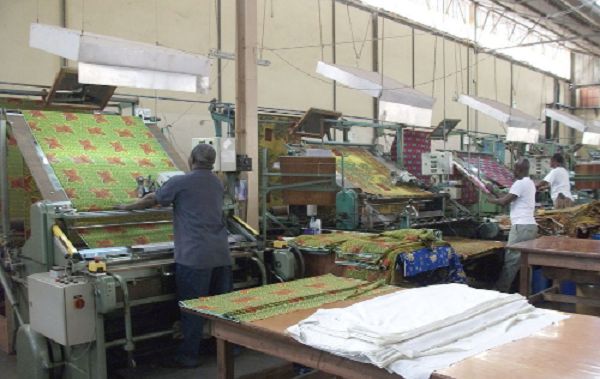The Statistical Bulletin report (June 2020) has shown increased credit support to the manufacturing sector following a decline in March when the coronavirus pandemic first reared its ugly head.
Credit to the sector in March fell to GH¢4.7billion from GH¢5.10billion the previous month. But following that decline, loans advanced to the sector increased to GH¢5.06billion in April, and continued in that upward trajectory to GH¢5.30billion and GH¢5.32billion in May and June respectively.
Even though the virus has not been completely eradicated from the country, the increase in loans to the manufacturing sector is a clean bill of health for the economy, considering the fact that the manufacturing sector has suffered persistent low growth in times past.
After hitting an impressive 9.5 percent in 2017, the sector’s growth declined to 6.3 percent in 2019. Indeed, the manufacturing sector grew by an impressive 9.5% in 2017, up from 7.9% in 2016 and 3.7% in 2015.
It is particularly refreshing to hear the manufacturing sector is finally bouncing back to life. Manufacturing’s contribution to the economy has decreased slightly over the past decade, this was in large part due to the growth of the contribution of the oil sector to GDP.
If the manufacturing sector is getting more access to finance, it would help it to invest, expand, and employ more people which is a good sign for the economy. In fact, Prof. Eric Osei-Assibey of the University of Ghana believes this trend could see hastened growth of the economy.
Manufacturing, he notes, is a labour-intensive sector and therefore, if you want inclusive economic growth, it has to be driven by the manufacturing sector or the agriculture sector.
Professor Osei-Assibey notes that one of the key constraints of manufacturing sector is access to credit, so if that constraint is being addressed, then we expect the sector’s performance to improve in the years ahead.
As the severity of the pandemic has been curbed, it is welcoming to learn that credit is being advanced to the sector even as government intensifies the resuscitation of the manufacturing sector with its flagship 1D 1F programme.
We are hopeful that if credit to the sector is maintained or even improved, there is no doubt that the sector will continue to grow and create job openings for Ghanaians to take advantage of. The average lending rate of commercial banks, though declined marginally, still remains high for businesses. This is another constraint for businesses.
1D1F will reduce high rate of post-harvest losses
The country losses about US$700,000.00 annually to post harvest losses. The Ministry of Food and Agriculture estimates that 20-50% of perishables like fruits, vegetables, root and tuber crops that is produced in the country is lost due to post-harvest losses.
An increase in post-harvest losses constitutes an unfortunate and avoidable reduction in the incomes of farmers. Many farmers in the Upper West region are harvesting tomatoes which has resulted in a glut situation there.
However, the full implementation of the one-district one factory concept in production centres around the country could also help to curb high post-harvest losses for products like tomatoes and other perishables.
Just last week, President Nana Addo Dankwa Akufo-Addo inspected ongoing work on the construction of the US$16 million Weddi Africa tomato processing factory located in Domfete, in Berekum, Bono East Region. Operating under Government’s 1-District-1-Factory initiative, the factory is a wholly-owned Ghanaian company, which will have an installed capacity to process 40,000 metric tons of fresh tomato per annum
Also, not too long ago in December last year, the President inaugurated a tomato processing factory and a free zone enclave at Doryumu in the Shai Osudoku District in the Greater Accra Region. The US$23-million tomato processing factory is also under the 1D1F initiative with the capacity to employ 600 direct staff and can produce an estimated 54,000 tonnes of tomato paste annually.
With such projects springing up, very soon the issue of post-harvest losses for perishables like tomatoes will become a thing of the past since the factories has the capacity to absorb excess produce and add value to be sold on the open market.
We are confident that with the establishment of such factories, the country will be positioned to take full advantage of the continental free trade zone (AfCFTA) which kicks off in January. Indeed, it would be sad that the country that hosts the AfCFTA Secretariat cannot participate meaningfully in intra-African trade because of a lack of capacity.
Minister of Information, Kojo Oppong-Nkrumah recently told Ghanaians that a total of 76 factory projects executed over the last three years under the ‘One District, One Factory’ initiative has been completed and operating.
He said an additional 232 of those projects were at various stages of completion. With such a string of factories in the horizon, we can confidently say will are well-positioned for AfCFTA.










